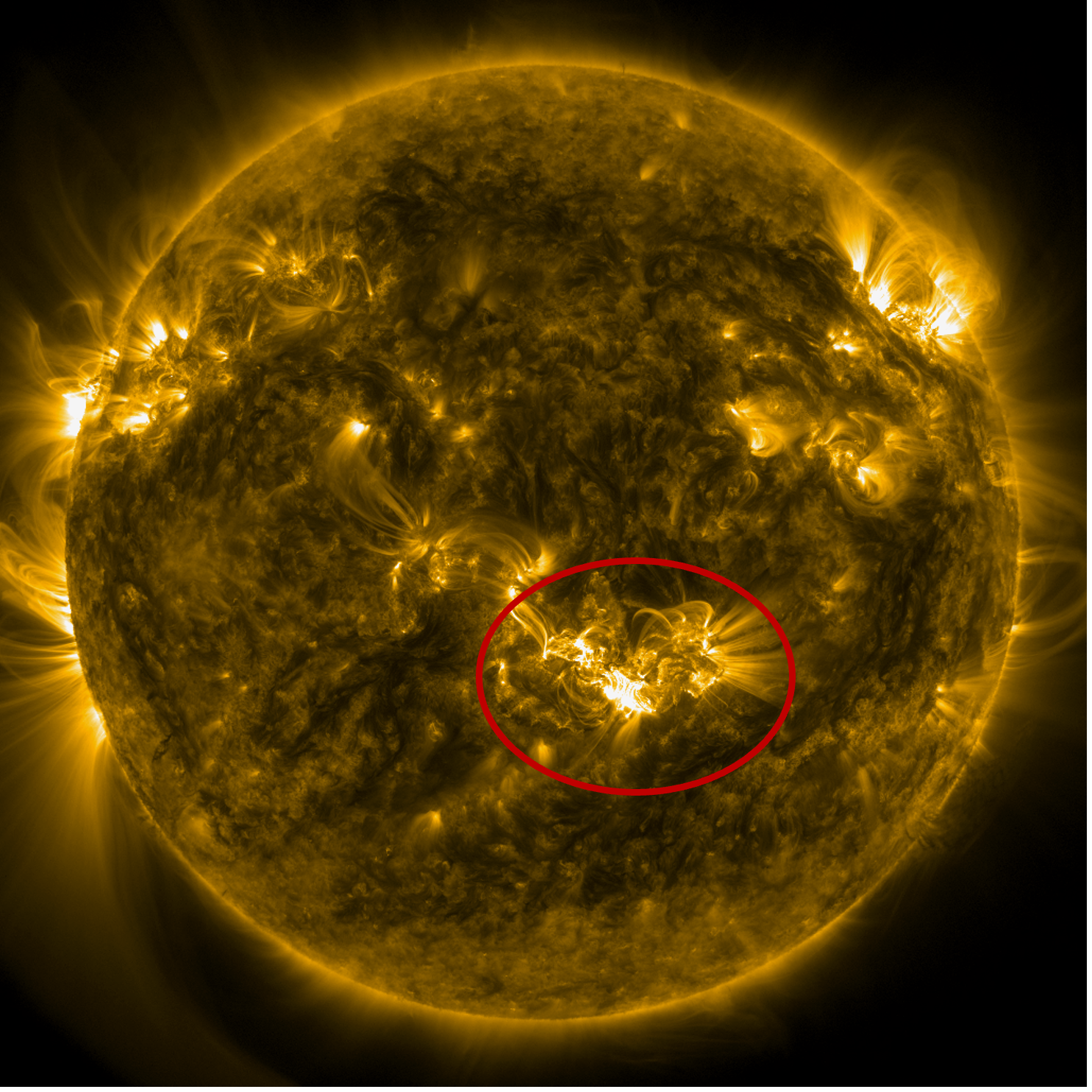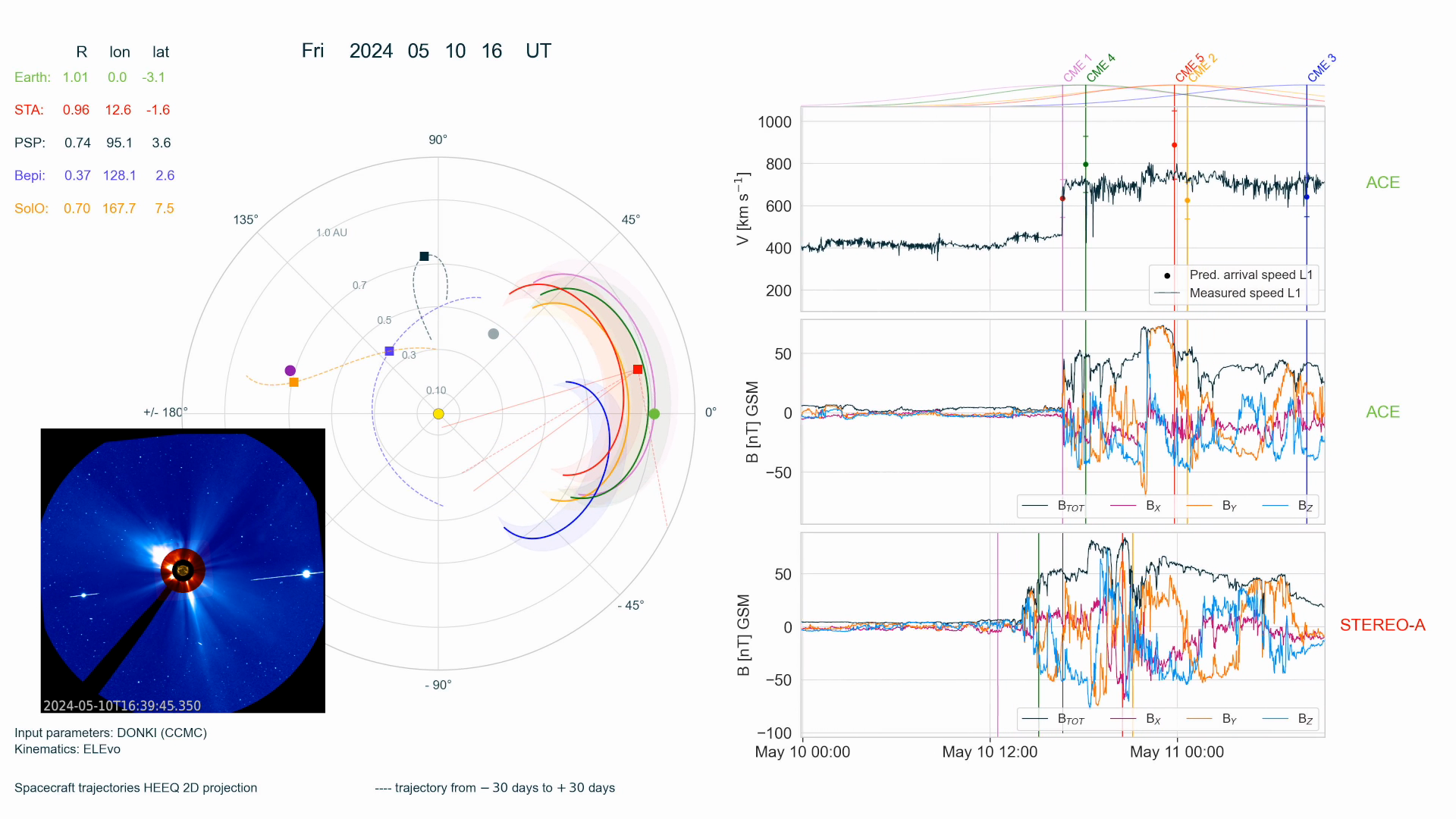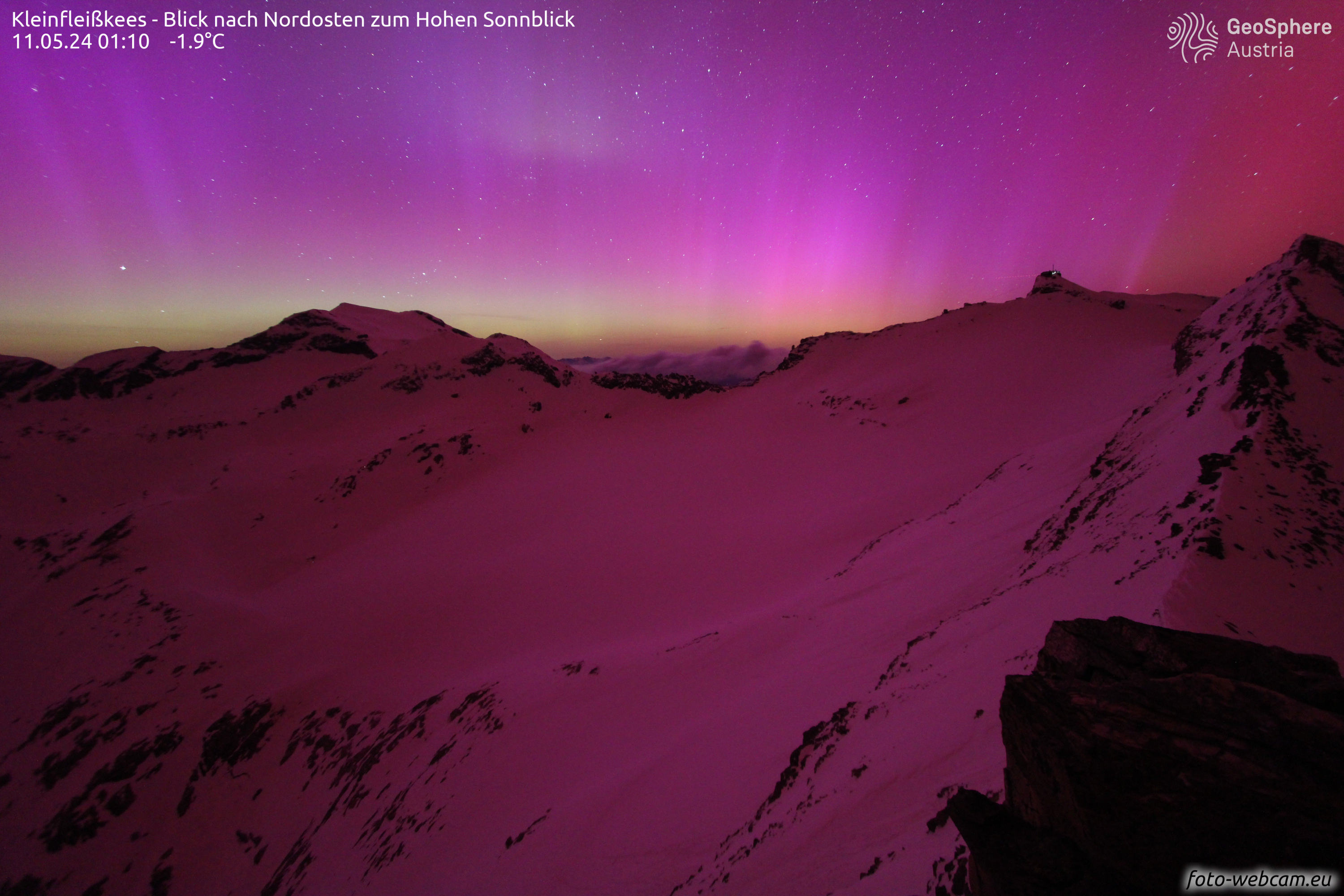New findings on the geomagnetic superstorm in May 2024
Solar storms are the cause of one of the most spectacular natural phenomena, namely auroras. However, they can also have a significant impact on our technological infrastructure. They disrupt satellites, interrupt GPS signals and, in extreme cases, can even paralyse power grids. However, it has so far been difficult to predict their exact effects at an early stage. Our recently published study, led by PhD student Eva Weiler at the Austrian Space Weather Office at the GeoSphere Austria, shows how future space missions could extend the warning time for extreme solar storms.
A solar storm is the result of a solar eruption, in which matter is ejected explosively from the Sun into space. These are highly accelerated, charged particles that carry a magnetic field with them. Whether a solar storm leads to the above-mentioned disturbances depends heavily on the orientation of this magnetic field. Only in certain orientations can the solar storm interact with the Earth's magnetic field and cause disturbances. The Earth's magnetic field is therefore a natural protective shield against solar storms, although it does not protect us equally from every solar storm.
Although we can use space telescopes to detect solar storms early and estimate when they will arrive at Earth, the exact magnetic field orientation and therefore potential effects remain unclear until the storm comes close to the Earth. This crucial information is provided by special space probes at the so-called Lagrange Point 1 (L1), which is located at four times the Earth-Moon distance between the Sun and the Earth. These probes measure the magnetic field of solar storms in real time and can also determine their orientation. The problem for space weather forecasting, however, is that a solar storm only takes about 10 to 60 minutes to travel from L1 to Earth, which is little time to take comprehensive protective measures in an emergency.
To be able to react earlier, space probes would have to be placed closer to the Sun. Unfortunately, however, it is not possible to keep space probes in a fixed position in front of L1 - such a position is unstable and lies outside Kepler's reality. One promising solution is the concept of "Distant Retrograde Orbits" (DRO). Several satellites would be sent into an Earth-like orbit, which would differ slightly in their eccentricity from that of the Earth's orbit. When orbiting the Sun, these space probes would then alternate between being in front of and behind the Earth. By using several satellites, it would be possible to ensure that at least one space probe is always located between the Sun and the Earth - and thus providing crucial measurements earlier than probes at L1.
In May 2024, the Earth experienced the strongest solar storm since 2003. Due to its intensity, it was categorised as a geomagnetic superstorm. It not only caused spectacular auroras as far away as Central Europe, but also significant technical problems: Navigation satellites were disrupted, some satellites dropped into lower orbits or briefly transmitted no data, and even flight routes had to be changed.
However, this event was not only remarkable because of its intensity, but also because of its unique data basis: in addition to the usual measurements from space probes at L1, the storm was also recorded by NASA's STEREO-A space probe. This makes it the first superstorm to be measured both by space probes at L1 and by another probe.
At the time of the event, STEREO-A was in a particularly interesting position: between the Earth and the Sun, and about four times closer to the Sun than L1 - in other words, exactly in the area that will also be relevant for future DRO missions. Thanks to this favourable position of STEREO-A, the superstorm was detected two and a half hours earlier than by space probes at L1.
This event therefore provided a unique opportunity to test the predictive potential of future DRO missions. A key issue for these missions is the optimum distance to Earth: on the one hand, the aim is to achieve the longest possible warning time, while on the other hand the accuracy of the forecast must be maintained. Although STEREO-A in this case was significantly further away from Earth than L1, we were able to show together with scientists from our own Conrad Observatory, the University of Graz, NASA and the University of New Hampshire (USA) that the strength of the May 2024 storm could be reliably determined even from this distance - an important result for the development of future space weather missions.
Solar storms normally decrease in intensity on their way to Earth as they expand and their magnetic field weakens as a result. However, in May 2024, there were five consecutive solar eruptions in the direction of Earth within just 28 hours. These interacted with each other and prevented each other from expanding. Due to the low expansion of the solar storms, high magnetic field strengths remained till Earth as a result.
Earlier studies had already suggested that interacting solar storms can reinforce each other and thus trigger extreme events. Our analysis of the eruptions in May 2024 confirms this hypothesis and provides valuable insights into the formation of extreme events.
The findings from the May 2024 event so far emphasise that the intensity of solar storms can also be estimated by space probes at greater distances from Earth than L1. In particular, satellites on a Distant Retrograde Orbit could significantly increase the warning time - and thus create valuable time to better protect critical infrastructure. This would be a decisive advance in space weather forecasting and could help to better control the risks of extreme solar storms in the future.




